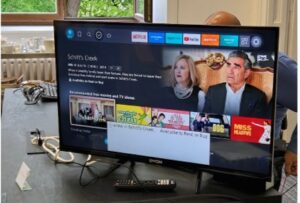European Accessibility Act: IAAP Brno Hybrid Event Recap
My Applause colleague Jason Munski and I attended the IAAP EU Accessibility 2025 Hybrid Event which took place over two days in the lovely city of Brno, Czech Republic. The event offered an opportunity to take part in workshops for EN 301 549, to attend presentations from industry experts, and to meet like-minded accessibility professionals as the European Accessibility Act (EAA) deadline draws near (If you’d like more in-depth information on the EAA, please watch our webinar.)
Day 1
The first day of the event was a workshop for IAAP members consisting of a deep dive into some of the EN 301 549 requirements that are not in the Web Content Accessibility Guidelines (WCAG). This is a welcome initiative, as there is currently a lack of documentation on how to test and pass/fail the newer requirements, which leads to different applications depending on interpretation.
Four separate groups of industry professionals were tasked to discuss the following requirements:
- 7.2.2, Audio description synchronization
- 11.6.2, No disruption of accessibility features
- 11.8.4, Repair assistance
- 12.2.2, Information and accessibility and compatibility features
Our workshop dealt with 12.2.2. Facilitator Shadi Abou-Zahra did an excellent job steering the discussion, teasing out points and allowing the participants to comb through the details of the requirement.
Applause has been testing EN 301 549 for several years with our own methodology, so we were quite interested in where the discussions would lead, as we’d be happy to update to match consensus with our accessibility peers.
It was immediately clear the requirement’s language needed clarification as people had some different interpretations of how the requirement applied, and how it should be tested.
Overall, the session was informed and spirited. We settled on a number of points that needed further investigation, and provided some recommendations for upcoming revisions and updates. Some takeaways were:
- Definitions for some of the terms would be helpful, in particular the breadth of “support services”
- The preconditions from Annex C were incomplete and should be expanded to include two additional points
- All of the accessibility information available should be noted as in scope for testing
- Test methodologies need to consider unique factors for this requirement, for example a prewritten, repeatable script for tester/support service interaction such as email and phone call queries
- AI could be helpful to introduce an automatic test of other AI agents / automated help desks
At the end of the workshops, the four groups reconvened and each presented summaries of the requirements that they had reviewed. We were able to use the information to help inform our own testing methodology. The IAAP published the results presentation at IAAP EU Webinar 7 May 2025 – EN301549 requirements that go beyond WCAG where the facilitators for each group give a good recap of the findings.
The workshop format is a great addition to the EN 301 549 body of knowledge and we welcome more of these. With the EAA deadline imminent, it’s crucial we’re all able to interpret and test the requirements outside of WCAG in a uniform manner. The IAAP has taken a good step forward and we look forward to participating in future events.

Amazon’s text-to-banner software allows for text to be positioned on an on-screen banner as required by the user
Day 2
Day 2 was a day of luminaries and panels, of promises and experiences, and of regulations and possibilities.
Peter Korn, Amazon’s Director of Accessibility, demonstrated an array of features that have helped Amazon earn their customers. Dialogue boost for video, VoiceView built into screen readers, the ability to stream audio directly into cochlear implants, and text to banner were all further evidence to their customer obsession.
As the curtain closed on the keynote, a highly-anticipated panel discussion exploring the EAA captured everyone’s attention. Surveillance authorities from Sweden, Ireland and the European Commission all shared their perspectives. Here are a few highlights:
- Carmen Butler from Sweden mentioned their member state is actively reviewing ecommerce sites and paying close attention to accessibility best practices via multi-sensory channels. They’re also having informal communications with other authorities.
- Dónal Rice from Ireland mentioned user inquiries will play a big part in their surveillance activities and monitoring is actively happening now. The EAA is also being viewed as another regulation they need to enforce and it’s “business as usual.”
- Inmaculada Placencia Porrero from the European Commission mentioned “We aren’t looking for penalties, only compliance.”
The panel closed with a bit of optimism. All three looked to a future that moved beyond standards and anticipated users would demand a higher level of usability. They anticipated innovation being born out of enabling better user experiences.
The spirit of innovation remained a key theme through the rest of the day: how companies were enabling better accessible and inclusive experiences through their e-books, TVs, smartphones, operating systems and more. More so, conversations emphasized how we all need to push past compliance and help each other on our own life journeys.
Overall
Brno is a beautiful city. We were lucky to attend and visit and an event like this was helpful to share like-minded ideas around approach and best practice.
We left knowing we made a few new friends, a refined understanding of the EN 301 549 standard, and a pragmatic perspective on the EAA framework.
Please reach out to Applause with any questions around EAA or EN 301 549. We would be happy to discuss this topic or general accessibility/inclusive design questions.
